German Army Ernst Pack & Söhne-made Individualised Officer’s Dagger
CATEGORY: Version
SKU: 20.GOR.04.01.05.002.000
Estimated market value:
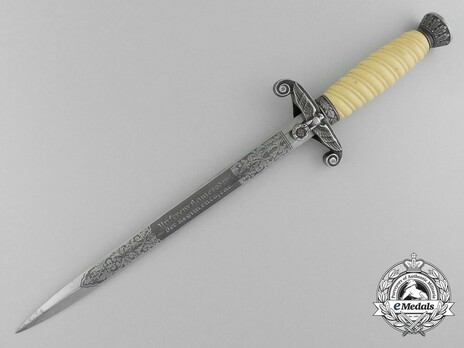
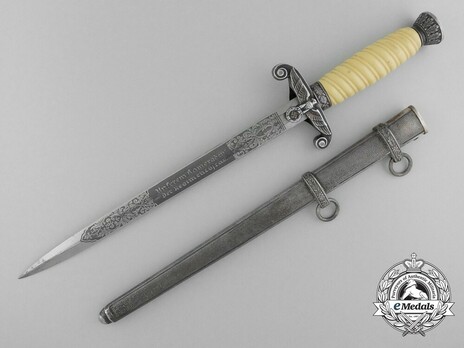
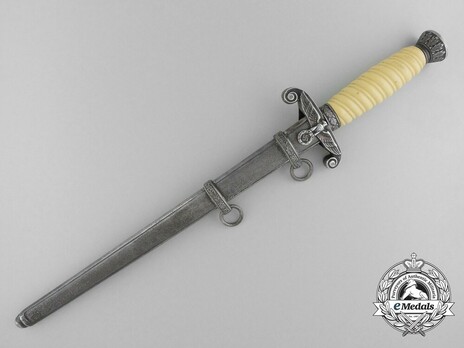
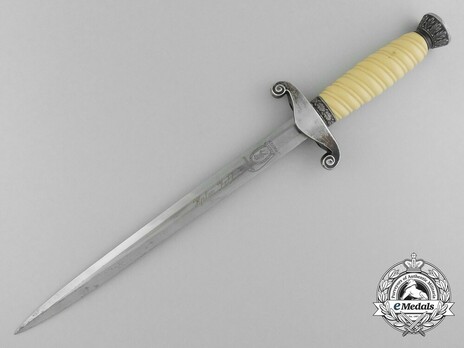
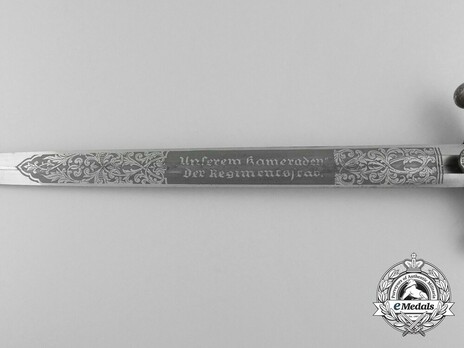
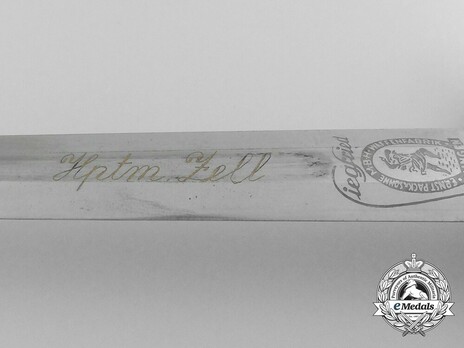
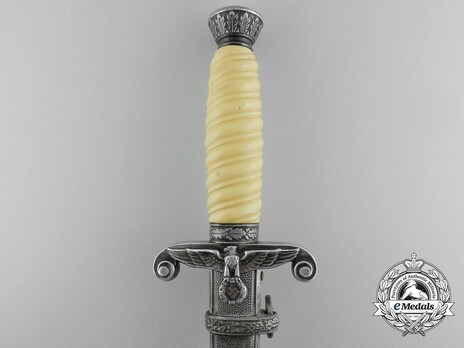
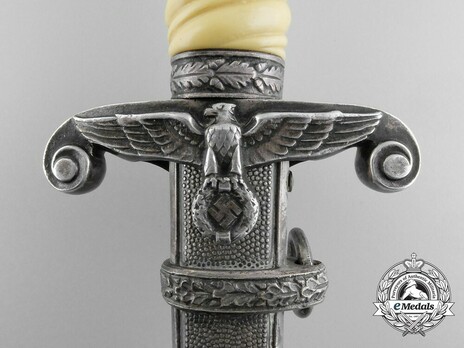
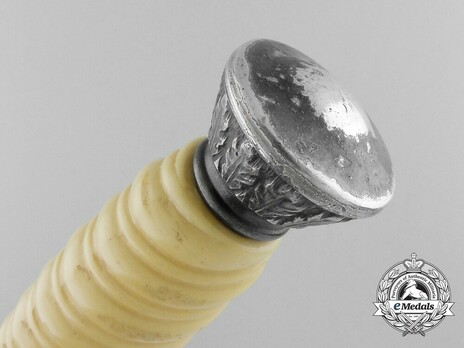
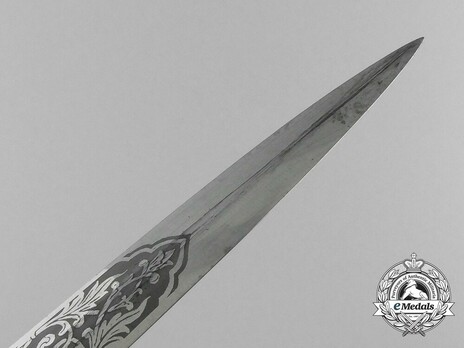
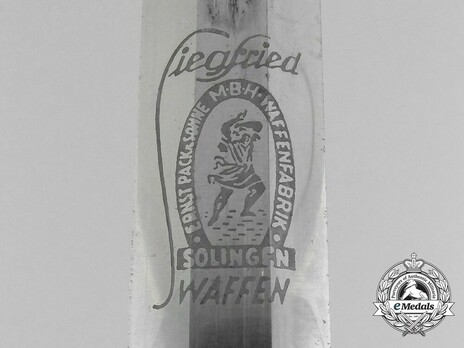
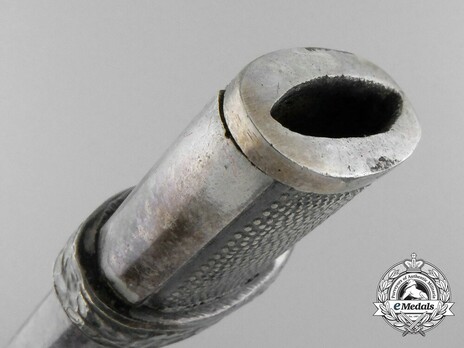
Estimated market value:
This is a unique and extremely well-preserved Heer (Army) Honour Dagger, measuring 395 mm with the scabbard on. The dagger features a nickel-silver plated magnetic metal blade, 255 mm in length, with a maximum width of 20 mm that gradually tapers toward the tip. The obverse features a central acid-engraved inscription of “Unserem Kameraden, Der Regimentstab” in German gothic script. The reverse features a silvered zink Wehrmacht-style German national eagle clutching a wreathed mobile swastika. Near the ricasso is the logo and maker’s mark of Ernst Pack & Söhne, Solingen, above which is an engraving reading “Hptm. (Hauptmann) Zell”. The tip of the blade is in a sharpened condition, while the edges are comparatively blunted. The blade fits neatly through the crossguard, which depicts a detailed, Wehrmacht-style German national eagle clutching a wreathed mobile swastika. The handle is composed of an extremely well-preserved, ivory-white knotted celluloid, which transitions into a richly-detailed silvered zink pommel circumscribed by oak leaves. It is accompanied by its original scabbard, constructed of silvered magnetic metal and measuring 282 mm in length. The throat of the scabbard is securely held together by a single metal screw. The scabbard features a functional spring catch that holds the dagger securely in place during storage and wear. It is surrounded by two rings, with oak leaf designs, securing in place a dagger hanger, composed of green felt bearing dual bands of silver aluminum wire, with adjustable zink loops and buckles. The hanger can be removed by functional, spring-loaded clips at both ends. There is tarnishing of the metal and zink features consistent with age, along with some running marks on the blade, but the dagger is in an otherwise near extremely fine condition.
The dagger for officers of the army was officially approved by Hitler and established on May 4, 1935. It could be worn by all officers in lieu of the bayonet or sword. This included all officers up to and including field marshals, as well as medical and veterinary officers, officials of equivalent ranks to officers, and selected NCOs.
The dagger with scabbard is about 40 cm long. The blade’s length is between 25 and 27 cm. Blades were often cross-grained polished. Rare examples are nickel-plated.
All metal fittings were silver plated in the beginning, but with the progression of the war the materials used were progressively cheaper and of lower quality, for example a natural aluminum finish.
The colour of the grip varies, ranging from white to dark orange. This is due to differences in materials and productions and was not used as a way to distinguish between ranks. It has a clockwise carved groove. Initially the grips were made of solid plastic, but around the time the war began this was changed to a plastic coating on a plaster filled and wooden base. Ivory or amber glass grip versions, among other materials, could have been ordered if the buyer was willing to pay the extra cost. Other custom-made versions included etched blades, damascus blades, and engraved crossguards.
Early cross guards and pommels were made of silver-plated brass. This later changed to nickel or an alloy with a silver or nickel plating. The cross guard shows a national eagle emblem, and the pommel a ring of oak leaves. The pommel is screwed onto the grip.
The scabbard was initially made of brass with a silver finish, but after 1936 this was changed to steel with a silver or nickel pebbled finish. Late daggers have a dull grey oxide finish. The scabbard has two hanger suspension rings with oak leaves.
The dagger was to be worn with a 42 cm silver portepee. Other colours, including gold have been observed, but they are very rare. It was worn on a double-strap hanger with white metal fittings, although general officer ranks were authorized to have gold-coloured metal fittings.
The wearing of the dagger was forbidden after September 5, 1944. The main reason for this was the fact that at this late stage of the war it was simply too dangerous for soldiers to wear a dagger instead of a gun at all times.

Comments
Sign in to comment and reply.


Scroll Top